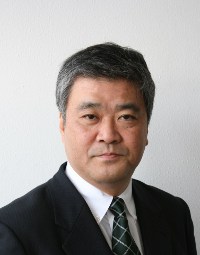I have been elected chairperson of the JSCE Concrete Committee for the current term to succeed Prof. Toyoaki MIYAGAWA of the Graduate School of Engineering at Kyoto University. My experience on the standing committee of the Concrete Committee dates back to 1997, during the second term of Chairperson Prof. Hajime OKAMURA. In 1998, I moved to Tokyo Institute of Technology from Nagoya University. Then I served as Secretary General of the Concrete Committee under the direction of Chairman Prof. Taketo UOMOTO for two years from 1999.
In my appointment as the chairperson of the Concrete Committee, I think that the committee should deal with various issues related to Japanese concrete field such as focusing on revising the JSCE Standard Specifications for Concrete Structures and also to enhance cooperation with international institutions such as fib, ACI, RILEM, and IABSE.
As a member of the standing committee, I participated in the publication of various guidelines. Major ones among those were Concrete Library No. 97 “Guidelines for design of steel fiber reinforced concrete columns (draft),” No. 113 “Guidelines for design and construction of ultra high-strength fiber reinforced concrete (draft),” No. 130 “Guidelines for design and construction of concrete structures using stainless steel reinforcing bars (draft),” and No. 133 “Guidelines for design and construction of prestressed concrete using highly functional prestressing tendons with epoxy resin (draft).” These guidelines provide guidance on leading-edge technologies in the field of concrete engineering. It would be my greatest pleasure to see widespread use of these new materials contributing to the further development of structural concrete.
Among the important roles of the Concrete Committee are the regular updating and publication of the Standard Specifications for Concrete Structures. During the most recent update to the 2007 Standard Specifications, I served as Manager of the Design Working Group within the Revising Committee (chaired by Prof. Taketo UOMOTO). I was also serving as Secretary General of the latest Revising Committee (chaired by Prof. Kyuichi MARUYAMA) for the upcoming 2012 Standard Specifications, but I resigned from this position at the end of the 2010 fiscal year after my election as Concrete Committee chairperson. Still, the update to the Standard Specifications remains a key responsibility of the Concrete Committee and I will continue to play my part.
|
The standing committee of the Concrete Committee is sometimes asked to take action when problems related to concrete occur. In 1999, a block of concrete dropped from the side wall of the Fukuoka Tunnel on the Sanyo Shinkansen line. This incident caused a big issue because the concrete hit a bullet train that was passing through the tunnel. The standing committee organized a Special Committee to deal with this problem, leading to proposals to prevent tunnel concrete from falling. Prior to this incident, and following the 1995 Great Hanshin Earthquake, the Concrete Committee compiled an Earthquake-Resistant Design Edition that was independent of the Design of the Standard Specifications for Concrete Structures.
Following the Great East Japan Earthquake, which occurred on March 11, 2011, all the available resources of the JSCE were mobilized. The Concrete Committee played a role in the JSCE’s Special Committee and dispatched its own survey teams to the disaster-stricken areas, where they surveyed damage to concrete structures on ordinary roads, expressways and railways. The earthquake triggered a tsunami that was more disastrous than the earthquake itself, causing catastrophic damage and leading to a disaster at the Fukushima Daiichi nuclear power plant. A large number of people died or are still missing, with many affected by the disaster or evacuated from their homes as a result. There remain huge problems to solve. I offer my deepest condolences for the dead and express my deepest sympathy for all disaster victims. JSCE will learn from this disaster and incorporate findings in the 2012 Standard Specifications for Concrete Structures. It is the duty of civil engineers to plan, design, construct and maintain a secure, safe and quality infrastructure. I aim to regularly update the Standard Specifications to serve that purpose. |
